Just as the long Canadian winter now edges towards its terminus, so too can we see the first furtive signs of the country’s creeping cannabis spring. The thaw will come across the land in uneven patches thanks to Justin Trudeau downloading all the regulatory work to our varyingly dysfunctional provincial governments. And based on the Request For Proposals put out by the Newfoundland Liquor Corporation this week to prospective cannabis retailers, the cannabis industry in this province certainly risks coming out half-baked.
The recreational cannabis regime in Newfoundland and Labrador has been left predominantly to private sector retailers. (Consumers in particularly far-flung areas will likely be able to buy mail-order from an NLC online store.) In this initial phase of legalization, the NLC intends to give out 41 licenses, on average one per postal code—except for a few places like the Southern Shore or A0K across the Strait of Belle Isle. In the St. John’s metro region, there will be at least seven stores—and only one in the already head-shop heavy downtown core.
Four types of marijuana outfits can apply for a NLC license. Tier 1 is the standalone, dedicated marijuana shop curated by true sommeliers of skunk. Tier 2 is an enclosed store-within-a-store that minors cannot enter, otherwise known as the porno hutch model. Tier 3 is a dedicated service desk kept away from the cash where all the cannabis is kept, not unlike the way many natural health stores will also sell three-foot bongs in the shape of Bob Marley’s head on the second floor. Tier 4 is basically just like smokes in the corner store, tucked on a shelf behind a plastic flap.
So far, so good. But the devil is always in the details.
Applications are ranked according to a points system, with licenses granted to those retailers who score the highest. These points are awarded for a range of categories from interior product display requirements to the business’ distance from a “games arcade.” Cannabis is also classed as a form of hazardous waste, and retail applicants need to prove they have factored in the cost of its safe disposal. In cases where the top applications for an area only come from Tier 1 or 2 establishments, the NLC reserves the right to select from additional Tier 3 and 4 establishments that meet or exceed the minimum point requirement.
On top of all this, as per their supply deal with the provincial government, Canopy Growth is guaranteed at least four retail locations in the province. One will be for its production facility (location TBD but probably the northeast Avalon). The other three locations have yet to be decided, but according to the RFP they “could include locations where other retailers have been granted a license to retail cannabis.” In other words, they can rightfully usurp a retail license from up to three people that the NLC think have tapped a profitable market.
Any aspiring cannabis retailer who makes it through all these hurdles and gets a license is then faced with the problem of making any money at it. The NLC has established a cap of eight percent commission on cannabis sales, despite downloading all associated costs to the retailer.
The NLC is confident that these thin margins will not deter applicants: interim president and CEO Sharon Sparkes told The Telegram as much yesterday. “My view of this right now is that we’ve put out a very flexible model such that individual retailers can look at their models and see if this will be something that will work with their business,” she further explained to CBC. “Depending on their circumstances that eight percent might be quite attractive and depending on other circumstances maybe not.”
There are already some concerns that the licensing process has made the marijuana retail prohibitively expensive for most applicants.
“Look at the geographical area in question,” a source familiar with the process told VICE. “It’s huge. No one’s going to be able to do anything with that, let alone meet the sales targets they will need in order to make any money off of it. You’ve got to move ten million dollars of marijuana to make a hundred grand. Unless you have a ton of money hidden in a safe somewhere like Scrooge McDuck, you can’t open a Tier 1 store.”
“It’s set up to favour people who deal with the NLC already, who already know how the scoring system operates,” they continued. “It’s impossible to do what [the NLC] want in this timeframe unless you already have an inside track on the process.”
Given all the costs downloaded to the retailers, the eight percent margin quickly disappears. Jon Keefe, co-owner of High Street on Duckworth, took to Twitter to draw up some napkin math.
Meanwhile, High Street’s other co-owner opined about the scale problems in the RFP to the St. John’s Morning Show on Wednesday. “Tomorrow for all I know the Costco of cannabis might open down on the waterfront, and all my hopes and dreams will dissipate.”
The RFP (and most of the province’s marijuana policy) appears to have been crafted to meet the since-abandoned July 1 legalization deadline. This, at least, was their justification for their generous supply and retail agreement with Canopy last December. Given their peremptory production and retail rights—along with the sheer scale of operation necessary to turn a profit under this system—suggest that the scales are already fully tipped towards Big Weed.
Forwarded from www,Vice.com

